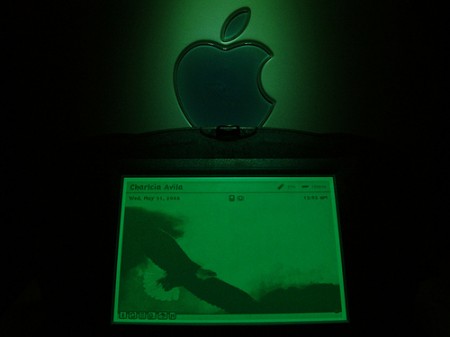June 21st, 2010
Funny how one little driver can set your plans back.
Here I was, all ready to begin the week-long experiment using nothing but classic Macs and Newtons, when I discover that I lost my Entrega serial-to-USB dongle’s driver disc. The CD came in a little white envelope and was next to a bunch of other RAM sticks, adapters, Firewire cords, and software CDs. Now it’s gone.
A search through the Internet yielding absolutely squat, and the Newtontalk list didn’t offer any suggestions. The closest I came was one of those sleazy driver sites that makes you wade through stupid ads to get to what you need. When the driver download came up, it still wasn’t what I needed.
Apparently, Entrega was bought out by Xircom, who was in turn bought out by Intel. Intel posts a bunch of downloads for the old Entrega/Xircom adapters, but only an old manual for the one I needed (model U1-D8). The driver is nowhere to be found.
The Entrega adapter was a marvelous piece of technology, helping me to connect to my iMac G3 and becoming my go-to gadget for all things Newton. Even though it’s a USB adapter, it needs a driver to operate correctly. And the usual Keyspan adapters don’t work on my pre-OS X Macs.
My hope in this system 7 experiment was to have my PowerMac G3 run as the hub of the whole operation, syncing my Newton, doing most of the heavy lifting, and connecting with the outside world. It’s true that I could simply connect my Newtons with my iMac G3, but I’d rather have just two Macs running during the experiment: the PowerMac, and the LC 520.
So everything’s on hold for now, until either that Entrega disc shows up (after a fifth or sixth sweep of my apartment) or I give up and go with the iMac for everyday tasks.
Posted by davelawrence8 at 12:53 pm on June 21st, 2010. Categories: lowend. Tags: adapter, classic, eMate, entrega, G3, imac, intel, mac, newton, powermac, serial, USB, xircom. Subscribe via RSS.
May 4th, 2010
Bryan Lunduke at Lunduke.com:
The Newton was, for those who can remember back that far, revolutionary. It was a huge deal. The company had some serious problems with it (marketing being one of the big ones), but the devices (and the Newton OS that powered them) were many years ahead of their time. Case in point: it still holds up strangely well against a current iPhone (Newton’s had multi-tasking, etc. way back in the old days). And, of course, there was the eMate 300 (which was a Newton-powered laptop that featured a rechargeable battery that, I kid you not, lasted through 28 hours of continuous usage).
This after rebutting whether Apple would’ve done fine without Steve Jobs’ return in 1997.
Lunduke probably assumes that the Newton platform could have, somehow, become profitable for Apple somewhere down the road. It’s an interesting thought experiment, but one fraught with unknowns.
If Steve Jobs hadn’t returned, would Apple still have avoided a buyout/bankruptcy/total meltdown? Would we be using bMates and cMates?
Posted by davelawrence8 at 5:42 am on May 4th, 2010. Categories: apple, jobs. Tags: apple, eMate, messagepad, newton, steve jobs, techcrunch. Subscribe via RSS.
April 28th, 2010
Tony Kan at My Apple Newton:
In summary, a $502.5m outlay resulted in a return of $842.5m or a profit of $340m. This analysis doesn’t include the portfolio of patents and other intellectual property that the Newton project generated and from which Apple continues to benefit to this day.
Depending on your perspective, the Newton was hardly a failure.
The perspective part is key, right? Because Kan is right, at least when it comes to financials and intellectual property.
But how about success in terms of business sense or popularity? Or even enjoyability?
I’ve heard it argued in a few places that, had Steve Jobs not killed off the platform, new Newtons like the eMate could have taken off. So maybe later it would have made business sense, with some tweaks and modifications here and there. A smaller size, perhaps, or a color screen. More support. Or, good lord, a lower price. That’s where I think the “failure” term gets thrown around a lot: the Newton wasn’t all that popular. It didn’t take over Apple’s business in a transformative way like, say, the Macintosh did. Or the iPod. It wasn’t a smash hit (I almost wrote “success” there).
There’s no question that people who used the Newton enjoyed it. They still enjoy it today, even if it’s not an every day machine. For current Newton users, the MessagePad was anything but a failure. Some see other devices’ handwriting recognition and interface and scoff. Those are the failures.
But when John Gruber postulated that the iPad has all ready outsold the entire Newton product line, he was probably right. The closest numbers anyone, including Grant Hutchinson, can come up with is about 200,000.
The iPad sold more than that on its first day.
Posted by davelawrence8 at 6:52 am on April 28th, 2010. Categories: newton history. Tags: eMate, failure, messagepad, newton, success. Subscribe via RSS.
April 12th, 2010
Posted by davelawrence8 at 8:52 am on April 12th, 2010. Categories: eMate. Tags: eMate, flickr, glow, green, newton, photo, powermac. Subscribe via RSS.
March 29th, 2010
The 2010 Bug: Part XXIII: Avi’s solution works for NOS 2.0 (My Apple Newton)
“However extraordinary Eckhart’s feat was in developing his patch for the Newton, it only works for NOS 2.1 machines, leaving NOS 2.0 users seemingly without a solution. Ron Parker confirms that Avi’s solution does fix NOS 2.0 machines (some MP120s and all MP130s) from the 2010 bug. It can be downloaded from here and here. However it won’t fix the bug on NOS 2.1 units.”
Apple renews Newton trademark (Patently Apple)
“When discovering Apple’s latest trademark filings for iBook and iBook Store in the Canadian Intellectual Property Office this week, I also stumbled upon Apple’s filing pertaining to their Newton logo design trademark that appears to have been renewed or has been automatically set to renew on October 13, 2010.”
eMate still a crowd pleaser (Vintage Mac Museum)
“The eMate was not a big commercial success, but may not have been on the market long enough to generate sustainable momentum. In my collection the eMate is a perennial crowd favorite, particularly among kids under 10. Children (and many adults) visiting the Museum always gravitate to this system, intuitively understand how to use it, and comment that it’s a cool little computer. Not bad for a nearly 15 year old device!”
Newton: Best PDA ever (maisonbisson.com)
“Just as I’m about to retire my old Newton, just as I’m exporting the contacts and calendar entries, I rediscovered why the Newton was — and still is — the best PDA ever.”
Apple iPad: We’ve reached Star Trek-nology (ZDNet)
“Since the failure of the Newton, the Tablet or PADD form-factor has always come under intense scrutiny, as no manufacturer or company has been able to make the concept stick.”
Programming for the Newton (McComber Development)
“I’ve been toying with the idea of writing an app for the Newton […] Of course I’ll want to come up with something that hasn’t been done on the Newton before.”
Behind the iPad: 4 Decades of Clever Technology (Tech News Daily)
“Apple has always stubbornly sought to ‘think different,’ but it decided to think small when it launched its first hand-held device, the Newton Message Pad, in 1993. The Newton created a new category of device — the Personal Digital Assistant (PDA).”
Newton stands with you (Egg Freckles)
“The difference between the Newton and any other modern computer is that the Newton stands with you, the others force you to catch up.”
Posted by davelawrence8 at 7:06 am on March 29th, 2010. Categories: apple, eMate, ipad, newton, y2010. Tags: eMate, fix2010, ipad, messagepad, news, newton, newtonscript, programming. Subscribe via RSS.
March 22nd, 2010
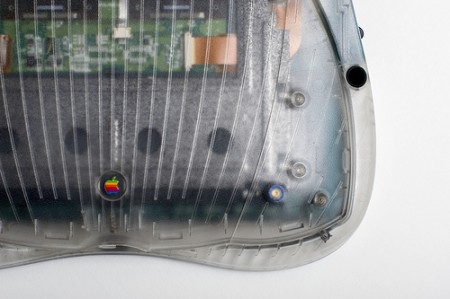
Grant Hutchinson (aka, splorp) posted a nice shot of the prototype, clear-plastic Newton eMate 300. He’s been on a roll lately, sharing photos of his Batman and Cadillac prototypes.
Sonny Hung has a bunch of clear-case Newton pics up on his Flickr, too. And then there’s the mythic orange eMate – with extra Vitamin C.
Check out our interview with Grant from a few weeks back at The hello Show.
[Photo used via Creative Commons, via Grant Hutchinson.]
Posted by davelawrence8 at 6:54 am on March 22nd, 2010. Categories: eMate. Tags: apple, case, clear, eMate, newton, PDA, prototype. Subscribe via RSS.
March 15th, 2010
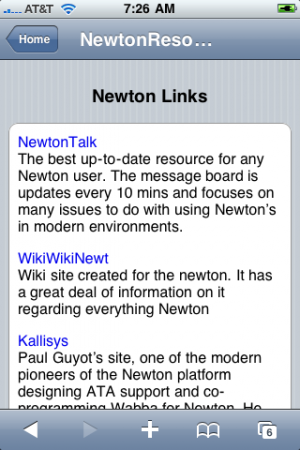
Something fun to try on your iPhone or iPod Touch: a Newton site from Sam Speake.
Called NewtonResourc, the site has basic info about Newtons, a tutorial (with more to come), a photo gallery, and links to Newton-specific sites.
[Via NewtonTalk.]
Posted by davelawrence8 at 7:09 pm on March 15th, 2010. Categories: blogs, newton. Tags: eMate, gallery, iphone, messagepad, newton, optimized, site, tutorial. Subscribe via RSS.
March 11th, 2010
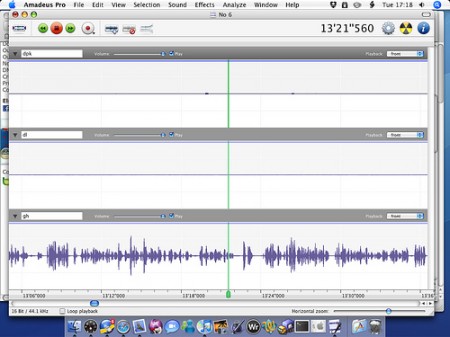
It was with tremendous pleasure that David and I got to speak with Grant Hutchinson, aka Splorp, during our show this week.
Since I first discovered the Newton, and in all the research afterward, Grant’s name kept popping up in all these different and helpful places. His FAQ, his Flickr library and group, his Newted Community – it was all kind of a “welcome to the party” for an up-and-coming Newton fan.
I’ve been lucky enough to talk with Grant about the Newted crash and resurrection, and David was wise enough to invite him on the show for a talk full of retro Mac and Newton goodness (among other things).
What’s neat is that Grant has been an Apple guy from the early days, when he got an Apple II in 1978, and saw his first OMP in Boston at a trade show. The clean, efficient Newton interface was appealing, and now here he is herding the cats of the Newton community, sharing his collection, and embarking on typography projects in his “free” time.
We should feel honored because Dan Benjamin and John Gruber of the thoughtful (and sporadic) podcast The Talk Show were going to invite him on. Grant, during some technical difficulties in recording our show, told us that he sent a spare Newton for Dan to try out. That’s pretty cool.
I think about how much free time Grant spends on a 11-year-dead PDA platform, or dinking around in his retro tech collection, and it helps me to feel that maybe I’m not so crazy after all.
So thanks for that, Grant. And thanks for being on our show.
[Photo courtesy of one Sir David Kendal.]
Posted by davelawrence8 at 6:00 am on March 11th, 2010. Categories: community, hello show, newton, newton history. Tags: david kendal, eMate, garageband, grant, hello show, hutchinson, messagepad, newton, podcast, splorp. Subscribe via RSS.
February 24th, 2010
“Part of what makes the Newton so great are groups like these. I certainly would never have bought my two Newts if there wasn’t such an active community out there. Working with retro-tech like the Emate or MP130 can be a wonderful challenge.
Newton fans certainly seem to some of the most active and vocal user groups. The fact that we’re still developing for a platform that’s been ‘dead’ for over a decade is impressive.”
– Bjorn Keizers, a newbie to the Newtontalk list in December.
Posted by davelawrence8 at 7:25 am on February 24th, 2010. Categories: community. Tags: community, eMate, groups, messagepad, newton, newtontalk, platform. Subscribe via RSS.
February 18th, 2010
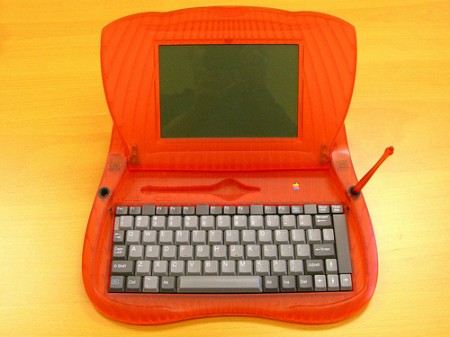
Jim Abeles posted a few photos of the prototype (and highly elusive) orange eMate 300.
According to Abeles, who is chief executive officer at Pre1 Software,
This came from a GUI designer for the eMate who said it was shown to developers at the 1996 MacWorld. Apparently it was the first time Apple used “stereo lithography” to prototype a product. Jonathan Ives saw it in use in Amsterdam and was inspired to try it. Three pieces were made; the top, bottom and pen.
Apple was toying around with other eMate colors – and business-grade models. It could be that the translucent plastic and candy coating inspired the iMac and iBook G3 varieties.
He’s got a bunch of other great classic Apple hardware shots, with some more Newton prototypes like the Lizzy, at his Flickr gallery. I remember him getting some buzz for his prototype iPhone pics a while back.
[Via Morgan Aldridge.]
Posted by davelawrence8 at 5:27 am on February 18th, 2010. Categories: eMate. Tags: eMate, flickr, hardware, messagepad, newton, orange, prototype. Subscribe via RSS.
